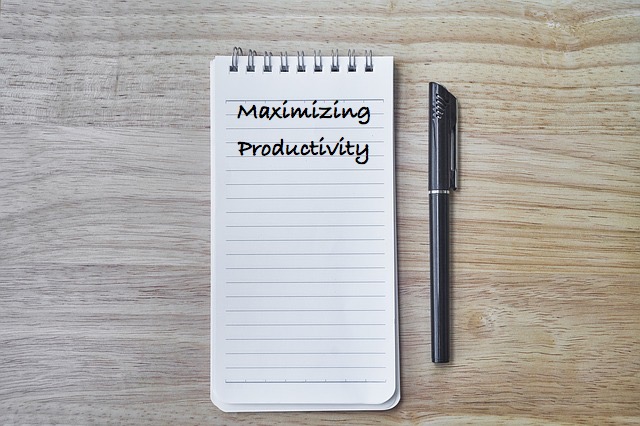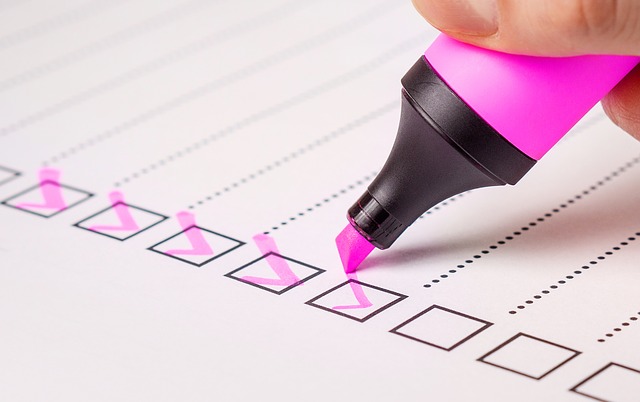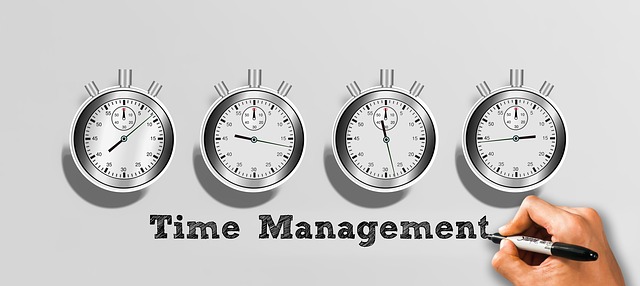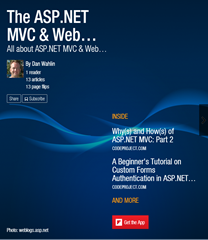|
Listen to This Post
|
Getting things done has always been a challenge for most people – and I include myself – regardless of where you work or what you do. No matter how hard some people try, they end up procrastinating tasks until the last minute. Some people simply focus better when they know they’re out of time and can’t procrastinate any longer. How many times have you put off working on a term paper in school until the very last minute? With only a few hours left your mental energy and focus seem to kick in to high gear especially as you realize that you either get the paper done now or risk failing. It’s amazing how a little pressure can turn into a motivator and allow our minds to focus on a given task.
Some people seem to specialize in procrastinating just about everything they do while others tend to be the “doers” who get a lot done and ultimately rise up the ladder at work. What’s the difference between these types of people? Is it pure laziness or are other factors at play? I think that some people are certainly more motivated than others, but I also think a lot of it is based on the process that “doers” tend to follow – whether knowingly or unknowingly.
While I’ve certainly fought battles with procrastination, I’ve always had a knack for being able to get a lot done in a relatively short amount of time. I think a lot of my “get it done” attitude goes back to the the strong work ethic my parents instilled in me at a young age. I remember my dad saying, “You need to learn to work hard!” when I was around 5 years old. I remember that moment specifically because I was on a tractor with him the first time I heard it while he was trying to move some large rocks into a pile. The tractor was big but so were the rocks and my dad had to balance the tractor perfectly so that it didn’t tip forward too far. It was challenging work and somewhat tedious but my dad finished the task and taught me a few important lessons along the way including persistence, the importance of having a skill, and getting the job done right without skimping along the way.
In this post I’m going to list a few of the techniques and processes I follow that I hope may be beneficial to others. Most of the ideas that follow came from learning and refining my daily work process over the years. However, since most of the ideas are common sense (at least in my opinion), I suspect they can be found in other productivity processes that are out there. Let’s start off with one of the most important yet simple tips: Start Each Day with a List.
1. Start Each Day with a (realistic) List
What are you planning to get done today? Do you keep track of everything in your head or rely on your calendar? While most of us think that we’re pretty good at managing “to do” lists strictly in our head you might be surprised at how effective writing out lists can be. By writing out tasks you’re forced to focus on the most important tasks to accomplish that day, commit yourself to those tasks, and have an easy way to track what was supposed to get done and what actually got done.
Start every morning by making a list of specific tasks that you want to accomplish throughout the day (some people like to write them out the night before). I’ll even go so far as to fill in times when I’d like to work on tasks if I have a lot of meetings or other events tying up my calendar on a given day.
I’m not a big fan of using paper since I type a lot faster than I write (plus I write like a 3rd grader according to my wife), so I use the sticky notes feature available in Windows and Mac. Here’s an example of today’s sticky note:
If you prefer “to do” lists instead of sticky notes, there are a ton of apps out there to help with that. One of my favorites is Any.do. What do you add to your list? That’s the subject of the next tip.
2. Focus on Small Tasks
It’s no secret that focusing on small, manageable tasks is more effective than trying to focus on large and more vague tasks. When you make your list each morning only add tasks that you can accomplish within a given time period. For example, if I only have 30 minutes blocked out to work on an article I don’t list “Write Article”. If I do that I’ll end up wasting 30 minutes stressing about how I’m going to get the article done in 30 minutes and ultimately get nothing done. Instead, I’ll list something like “Write Introductory Paragraphs for Article”. The next day I may add, “Write first section of article” or something that’s small and manageable – something I’m confident that I can get done. You’ll find that once you’ve knocked out several smaller tasks it’s easy to continue completing others since you want to keep the momentum going.
In addition to keeping my tasks focused and small, I also make a conscious effort to limit my list to 4 or 5 tasks initially. I’ve found that if I list more than 5 tasks I feel a bit overwhelmed which hurts my productivity. It’s easy to add additional tasks as you complete others and you get the added benefit of that confidence boost of knowing that you’re being productive and getting things done as you remove tasks and add others.
3. Getting Started is the Hardest (Yet Easiest) Part
I’ve always found that getting started is the hardest part and one of the biggest contributors to procrastination. Getting started working on tasks is a lot like getting a large rock pushed up and over a hill. It’s difficult to get the rock rolling at first, but once you manage to get it rocking some it’s really easy to get it rolling on its way to the bottom. As an example, I’ve written 100s of articles for technical magazines over the years and have really struggled with the initial introductory paragraphs. Keep in mind that these are the paragraphs that don’t really add that much value (in my opinion anyway). They introduce the reader to the subject matter and nothing more. What a waste of time for me to sit there stressing about how to start the article. On more than one occasion I’ve spent more than an hour trying to come up with 2-3 paragraphs of text. Talk about a productivity killer!
Whether you’re struggling with a writing task, some code for a project, an email, or other tasks, jumping in without thinking too much is the best way to get started I’ve found. I’m not saying that you shouldn’t have an overall plan when jumping into a task, but on some occasions you’ll find that if you simply jump into the task and stop worrying about doing everything perfectly that things will flow more smoothly. For my introductory paragraph problem I give myself 5 minutes to write out some general concepts about what I know the article will cover and then spend another 10-15 minutes going back and refining that information. That way I actually have some ideas to work with rather than a blank sheet of paper. If I still find myself struggling I’ll write the rest of the article first and then circle back to the introductory paragraphs once I’m done.
To sum this tip up: Jump into a task without thinking too hard about it. It’s better to to get the rock at the top of the hill rocking some than doing nothing at all. You can always go back and refine your work.
4. Learn a Productivity Technique and Stick to It
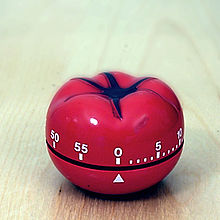 There are a lot of different productivity programs and seminars out there being sold by companies. I’ve always laughed at how much money people spend on some of these motivational programs/seminars because I think that being productive isn’t that hard if you create a re-useable set of steps and processes to follow. That’s not to say that some of these programs/seminars aren’t worth the money of course because I know they’ve definitely benefited some people that have a hard time getting things done and staying focused.
There are a lot of different productivity programs and seminars out there being sold by companies. I’ve always laughed at how much money people spend on some of these motivational programs/seminars because I think that being productive isn’t that hard if you create a re-useable set of steps and processes to follow. That’s not to say that some of these programs/seminars aren’t worth the money of course because I know they’ve definitely benefited some people that have a hard time getting things done and staying focused.
One of the best productivity techniques I’ve ever learned is called the Pomodoro Technique and it’s completely free. This technique is an extremely simple way to manage your time without having to remember a bunch of steps, color coding mechanisms, or other processes. The technique was originally developed by Francesco Cirillo in the 80s and can be implemented with a simple timer. In a nutshell here’s how the technique works:
- Pick a small task to work on
- Set the timer to 25 minutes and work on the task
- Once the timer rings record your time
- Take a 5 minute break
- Repeat the process
Here’s why the technique works well for me:
- It forces me to focus on a single task for 25 minutes. In the past I had no time goal in mind and just worked aimlessly on a task until I got interrupted or bored. 25 minutes is a small enough chunk of time for me to stay focused. Any distractions that may come up have to wait until after the timer goes off. If the distraction is really important then I stop the timer and record my time up to that point.
- When the timer is running I act as if I only have 25 minutes total for the task (like you’re down to the last 25 minutes before turning in your term paper….frantically working to get it done) which helps me stay focused and turns into a “beat the clock” type of game. It’s actually kind of fun if you treat it that way and really helps me focus on a the task at hand. I automatically know how much time I’m spending on a given task (more on this later) by using this technique.
- I know that I have 5 minutes after each pomodoro (the 25 minute sprint) to waste on anything I’d like including visiting a website, stepping away from the computer, etc. which also helps me stay focused when the 25 minute timer is counting down.
There are certainly many other productivity techniques and processes out there (and a slew of books describing them), but the Pomodoro Technique has been the simplest and most effective technique I’ve ever come across for staying focused and getting key tasks done each day. While you don’t need an app to use this technique, there are several apps out there if you’re interested.
5. Persistence is Key
Getting things done is great but one of the biggest lessons I’ve learned in life is that persistence is key especially when you’re trying to get something done that at times seems insurmountable. Small tasks ultimately lead to larger tasks getting accomplished, however, it’s not all roses along the way as some of the smaller tasks may come with their own share of bumps and bruises that lead to discouragement about the end goal and whether or not it is worth achieving at all.
I’ve been on several long-term projects over my career as a software developer (I have one personal project going right now that fits well here) and found that repeating, “Persistence is the key!” over and over to myself really helps. Not every project turns out to be successful, but if you don’t show persistence through the hard times you’ll never know if you succeeded or not. Likewise, if you don’t persistently stick to the process of creating a daily list, follow a productivity process, etc. then the odds of consistently staying productive aren’t good.
6. Track Your Time
How much time do you actually spend working on various tasks? If you don’t currently track time spent answering emails, on phone calls, browsing the Internet, and working on various tasks then you might be surprised to find out that a task that you thought was going to take you 30 minutes ultimately ended up taking 2 hours. If you don’t track the time you spend working on tasks how can you expect to learn from your mistakes, optimize your time better, and become more productive? That’s another reason why I like the Pomodoro Technique – it makes it easy to stay focused on tasks while also tracking how much time I’m working on a given task.
7. Eliminate Distractions
I blogged about this tip several years ago but wanted to bring it up again. If you want to be productive (and ultimately successful at whatever you’re doing) then you can’t waste a lot of time playing games or be on Twitter, Facebook, or other time sucking websites. If you see an article you’re interested in that has no relation at all to the tasks you’re trying to accomplish then bookmark it and read it when you have some spare time (such as during a pomodoro break). Fighting the temptation to check your friends’ status updates on a social media site? Resist the urge and realize how much those types of activities are hurting your productivity and taking away from your focus.
I’ll admit that eliminating distractions is still tough for me personally and something I have to constantly battle. But, I’ve made a conscious decision to cut back on my visits and updates to social media and other sites.
Ultimately it comes down to self-discipline and how badly you want to be productive and successful in your career, life goals, hobbies, or whatever you’re working on. Rather than having your homepage take you to a time wasting news site, game site, social site, or others, how about adding something like the following as your homepage? Every time your browser opens you’ll see a personal message which helps keep you on the right track. You can download my ubber-sophisticated homepage here if interested.
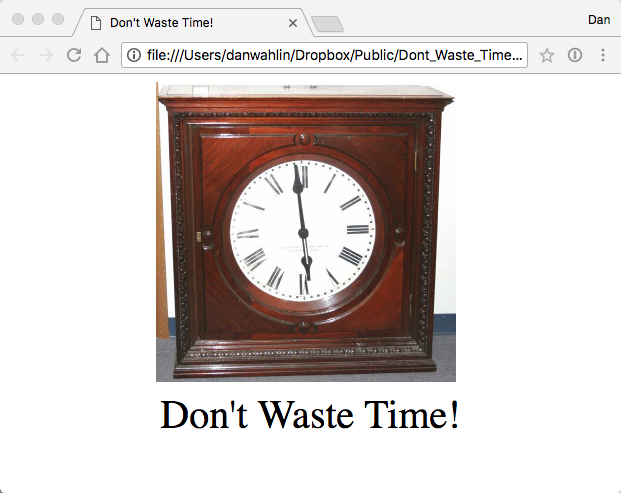
If you want a tool to help eliminate distractions (while also helping you stay focused for a set period of time) check out Forest: stay focused, be present. You can use it with iOS, Android or as a Chrome extension. There are a lot of additional tools out there to block you from going to time wasting sites while you’re trying to focus as well.
8. Learn to Relax
This final tip is arguably one of the most important to maximize your productivity in my opinion. There are many studies out there touting the benefits of stress and anxiety reduction on productivity and creativity. We all know that unhealthy stress and anxiety can reduce our productivity but how many of us take action? In today’s stressed-out world it’s more important than ever to work on this skill. It’s something that takes practice for many of us and requires a lot of effort, but it’s totally worth the time investment in my experience. It may sound a bit “out there”, but learning to quiet your mind might be one of the best things you’ll ever do for yourself.
So how do you learn to relax? Every person is unique, so I can’t necessarily answer the question for you personally. What I can do is share a few techniques that I like to use. I’m going to be as brief as possible here since this is a big topic (maybe I’ll do another post that focuses on this and how it’s change my life for the better).
While some people are naturally relaxed and calm most of the time, I’ve always been a bit of a high stress/anxious person that tends to worry about things that are often out of my control. In 2nd grade I was given the “Head Worry Wart” award at the end of the school year (no joke – I actually received an award certificate for that believe it or not). At the time I was proud that I received an award, but now I laugh a bit as I look back and realize that the “award” was an early warning sign that I needed to relax and worry less.
For nearly 40 years I felt like I had no control over my stress and anxiety/worry and reached a point where I felt like I was at the bottom of a hole that I could never get out of – I just felt trapped in my own stress and didn’t know how to stop or even reduce it aside from exercising. I finally reached a point where I realized I had to make a change. I’ve run my own software and training company for nearly 20 years now and while I wouldn’t change that aspect of my life, it does add some additional stress and worry. I realized that reducing stress/anxiety/worry was a skill that I needed to develop and enhance. As with learning any skill, practice and hard work is required.
I read book after book, article after article, listened to audiobooks, watched YouTube videos about reducing stress/anxiety/worry, talked with people who I felt had already mastered the skill, and finally decided that the key to reducing stress for me was learning to be mindful about how I was feeling. If you’re new to mindfulness, in a nutshell it’s learning to be aware of how you’re feeling in the present moment. That means being aware of how your body feels (emotions, any pain you’re feeling, your heart rate, etc.) as well as what thoughts you’re thinking.
I wasn’t truly aware any of these things aside from the fact that I felt stressed out a lot. One negative thought could trigger a cascade of negative thoughts which spiraled out of control at times, leading to a lot of unnecessary stress and worry, and a huge decrease in productivity. My mind was often like a runaway train that I didn’t even realize was running away. In talking with others I’ve come to realize that I’m not alone here.
While learning to be more mindful is a big topic that many articles, books, and scientific studies have addressed, here’s what I ended up doing:
- I practiced monitoring and analyzing what I was thinking about and how I was feeling in different situations every day. This is extremely hard to do until you practice it day after day especially given that our brains normally jump around a lot (something called the “monkey mind”). You have to consistently remind yourself to “check-in” throughout the day and monitor what you’re thinking about and how you’re feeling.If I find I’m ruminating over something stupid (especially things that are made up and/or out of my control), I shift my thoughts to something more beneficial, take a few deep breathes, or use other techniques. If I sense that I’m getting upset over a situation (code that isn’t working, a difficult topic to learn, a challenging client or meeting, etc.) I note how I’m feeling and employ some of the tactics that help me relax and get back to being productive.
- To get better at mindfulness and controlling my thoughts I started actively quieting my mind by meditating on a consistent basis. I’ll have to admit that I laughed at the concept of meditation earlier in life and thought it was for monks (no offense to any monks out there – I now have a ton of respect for the skills you’ve learned :-)). In hindsight, I just didn’t know what I didn’t know when it came to meditation.Meditation was extremely hard for me at first. Try sitting in a quiet room for 60 seconds and keeping your mind clear of any thoughts – don’t think anything! For newbies, within a few seconds your mind will start thinking about something and you won’t even realize it. By learning to quiet your mind you can relax and develop greater productivity and creativity as a result. You’ll also learn to be more mindful about what you’re thinking and feeling. This doesn’t mean you ignore any thoughts that come up while meditating. Instead you note them and go back to focusing on something else like your breathing, a mantra, etc. You can find a list of meditation techniques here.
- Use an app to get started with meditation rather than trying to go it alone. There are many meditation techniques out there as mentioned earlier, but if you’re interested in getting started meditating I recommend apps such as Insight Timer, Welzen, Headspace, or Aware. I alternate between several apps and even use breathing apps like Pranayama. Here are some of the apps I have loaded on my phone:
So has meditating and being more mindful helped my productivity? I can say “Yes” with 100% confidence. It’s helped me eliminate a ton of stress, anxiety, and worry and made me much more productive (especially in stressful situations) and more creative overall. When I’m stuck on something, I recognize how I’m feeling and what I’m thinking and typically step away for a few minutes (I used to suffer through the problem until it was solved which wasn’t very efficient). I’ve seen many other benefits as well in my life but that’s a topic for another blog post.
Summary
Is there a single set of steps that if followed can ultimately lead to productivity? I don’t think so since one size has never fit all. Every person is different, works in their own unique way, and has their own set of motivators, distractions, and more. If you learn what steps work best for you and gradually refine them over time, you can come up with a personal productivity process that can serve you well. Productivity is definitely an “art” that anyone can learn with a little practice and persistence. Start with one productivity technique to get things kicked-off and then add additional techniques as needed.
You’ve seen some of the steps that I personally like to follow and I hope you find some of them useful in boosting your productivity. If you have others you use please leave a comment. I’m always looking for ways to improve.




